Abstract
In three experiments, behavior maintained by fixed-interval schedules changed when response-independent reinforcement was delivered concurrently according to fixed- or variable-time schedules. In Experiment I, a pattern of positively accelerated responding during fixed interval was changed to a linear pattern when response-independent reinforcement occurred under a variable-time schedule. Overall response rates (total responses/total time) decreased as the frequency of response-independent reinforcement increased. Experiment II showed that the response-rate changes in the first experiment were controlled by the response-reinforcer relation, but the changes in patterns of responding were similar whether concurrently available reinforcement at varying times was response-dependent or response-independent. In the final experiment, the addition of response-independent reinforcement at fixed times to a fixed-interval schedule resulted in changes in both local and overall response rates and in the occurrence of positively accelerated responding between reinforcements. These results suggest that the temporal distribution of reinforcers determines response patterns and that both the response-reinforcement dependency and the schedule of reinforcement determine overall response rates during concurrently scheduled response-dependent and response-independent reinforcement.
Keywords: fixed-interval schedules, fixed-time schedules, variable-interval schedules, variable-time schedules, concurrent schedules, response-independent reinforcement, key pecking, pigeons
Full text
PDF


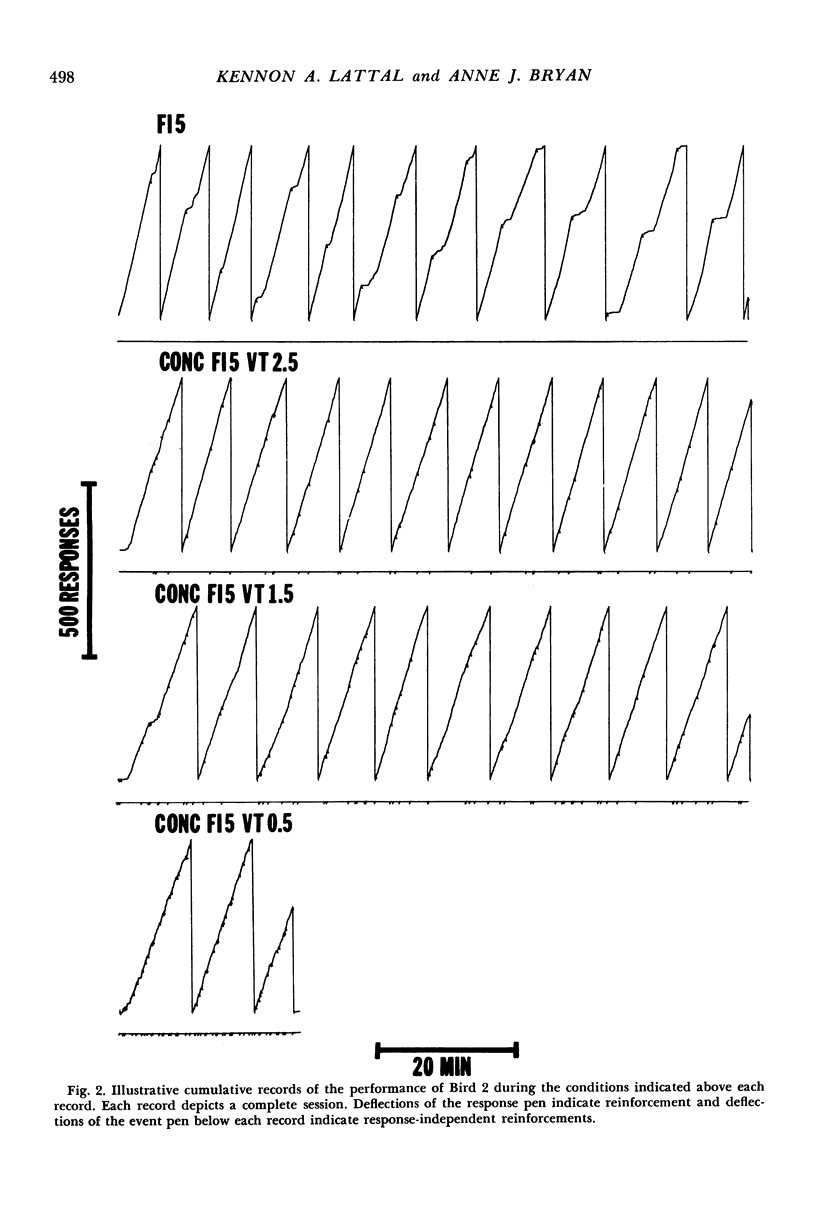
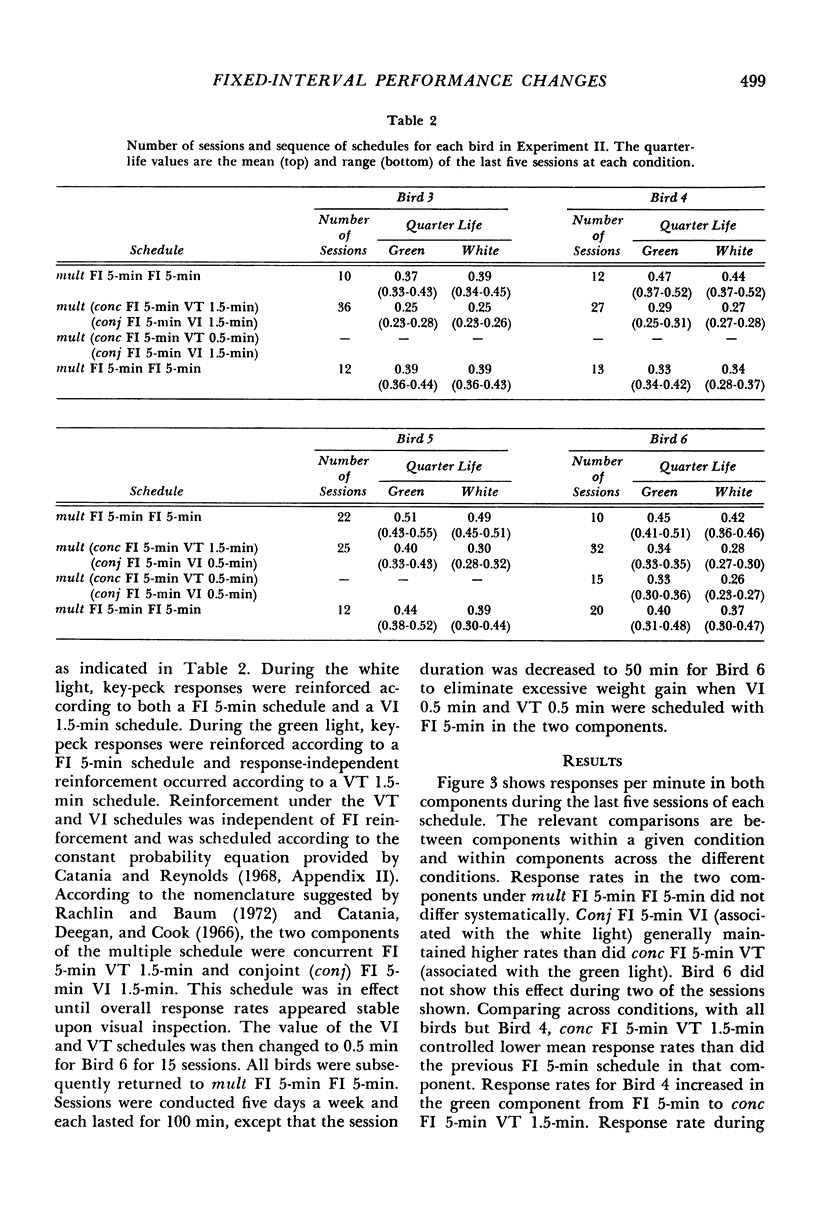

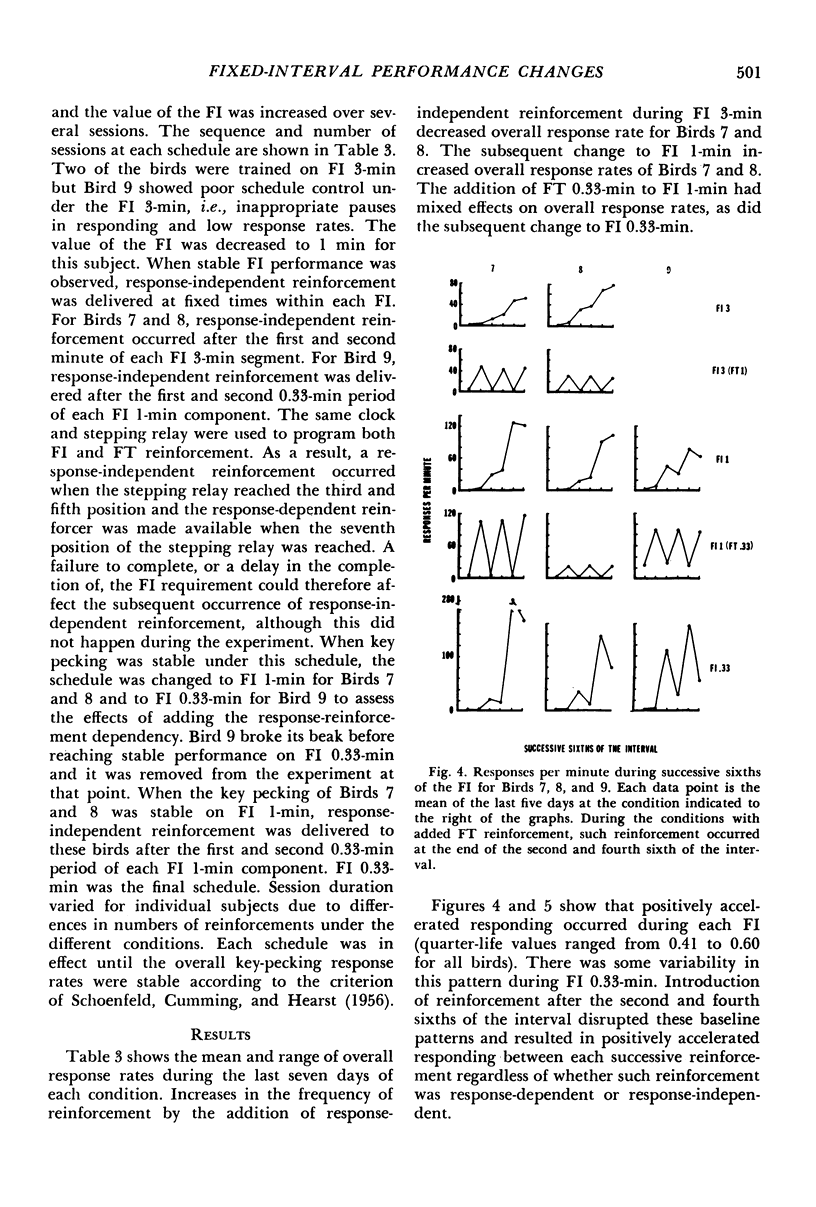
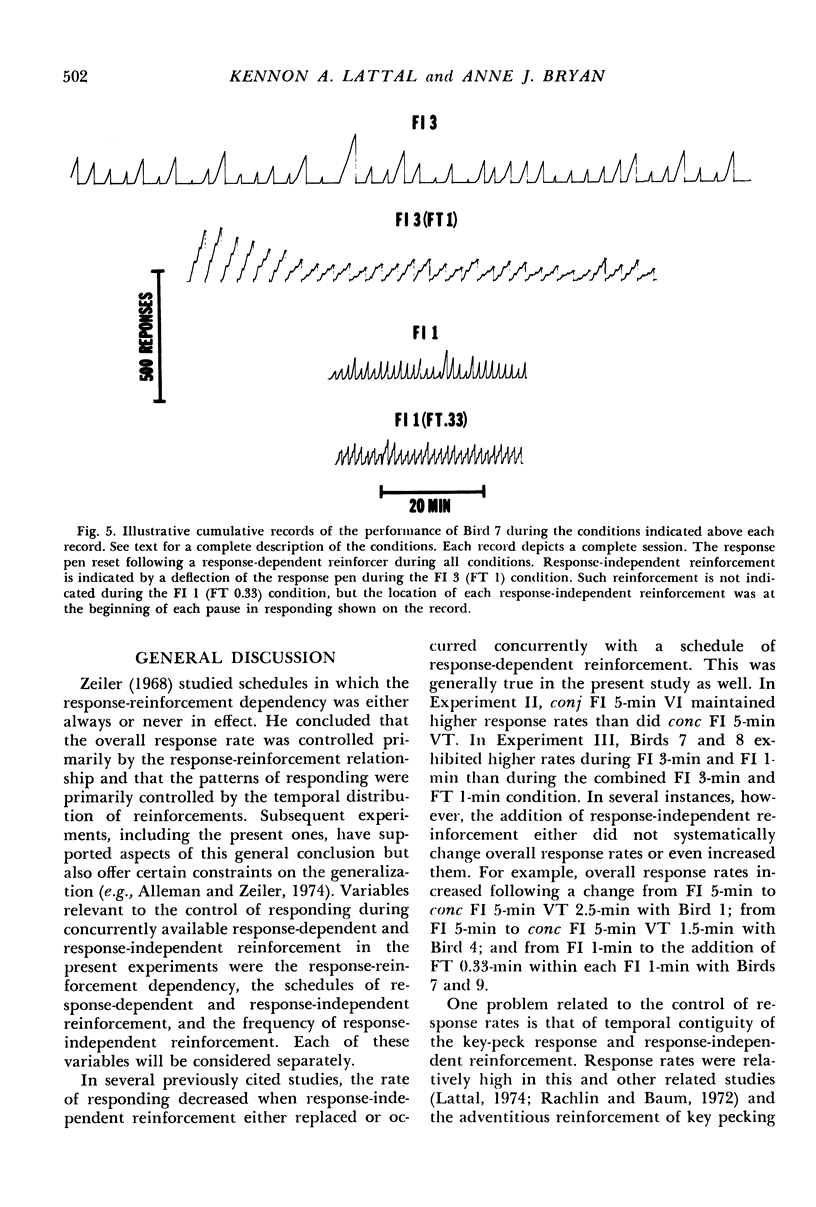
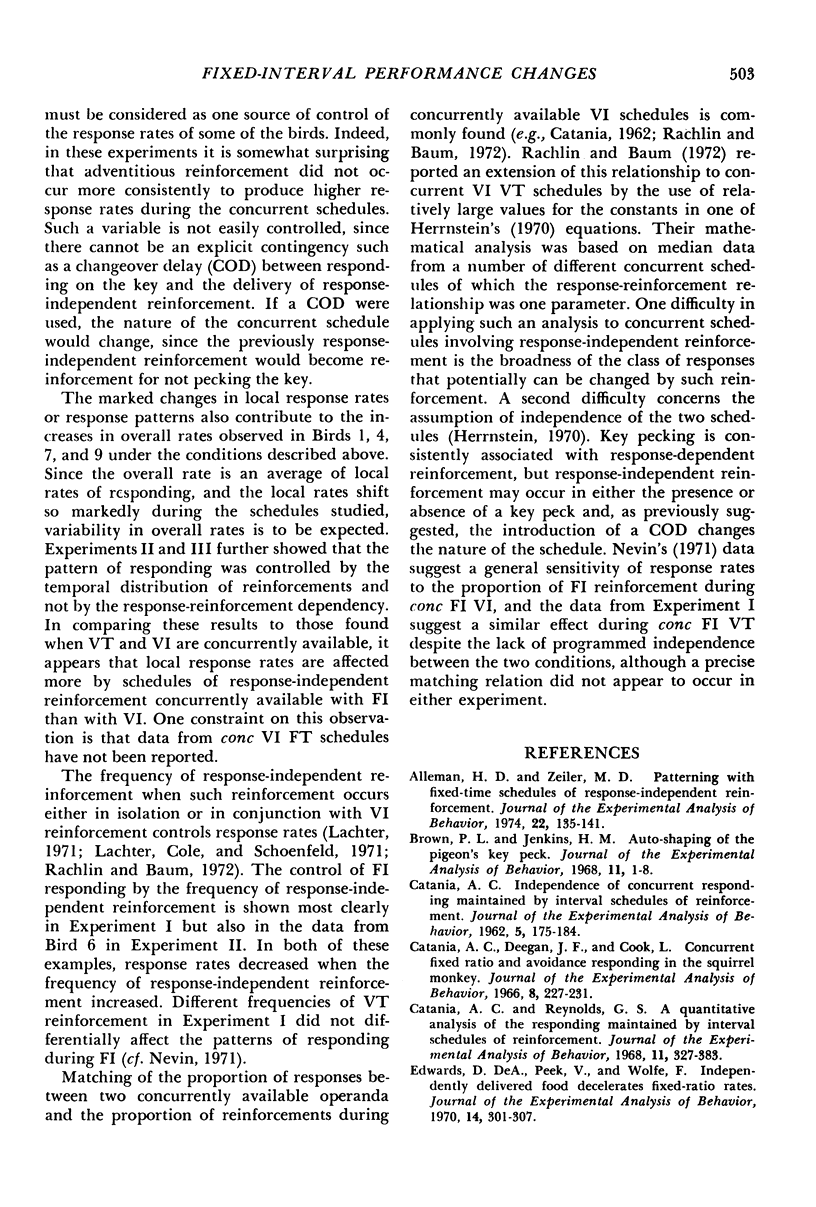
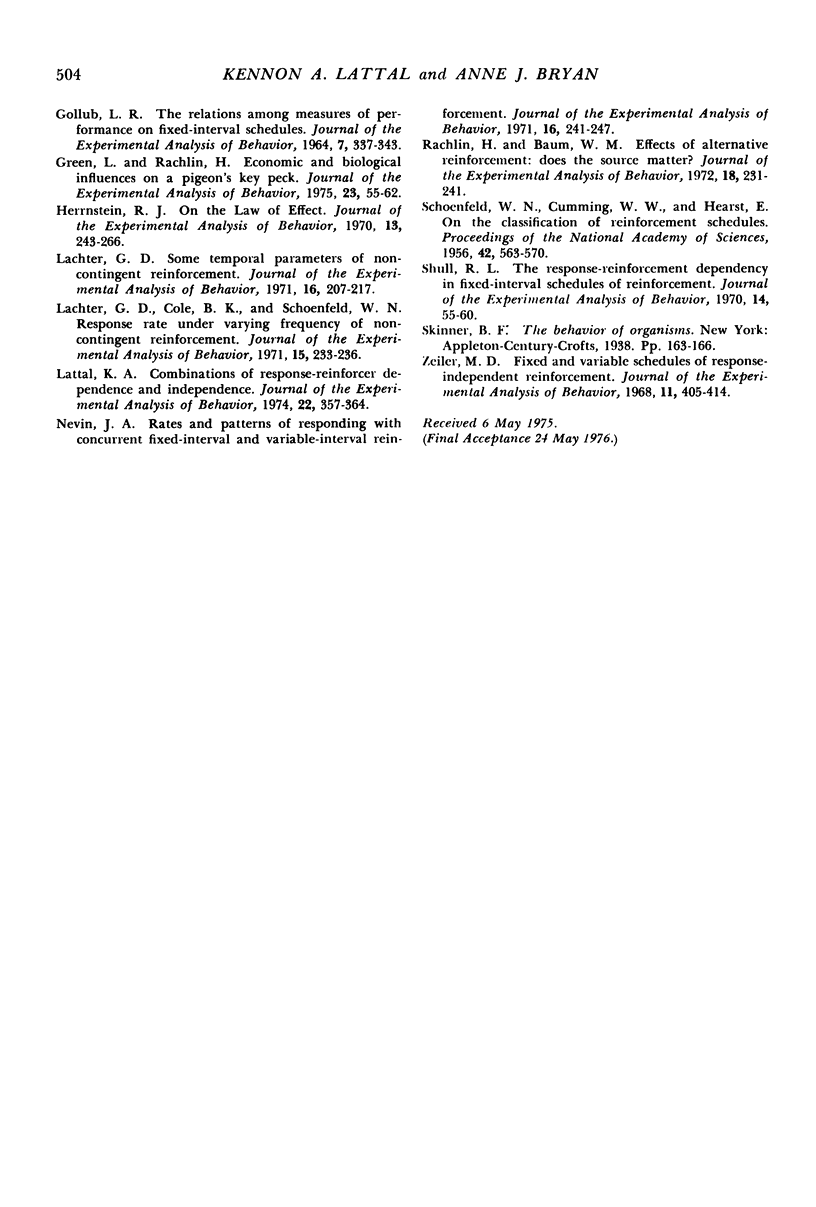
Selected References
These references are in PubMed. This may not be the complete list of references from this article.
- Alleman H. D., Zeiler M. D. Patterning with fixed-time schedules of response-independent reinforcement. J Exp Anal Behav. 1974 Jul;22(1):135–141. doi: 10.1901/jeab.1974.22-135. [DOI] [PMC free article] [PubMed] [Google Scholar]
- Brown P. L., Jenkins H. M. Auto-shaping of the pigeon's key-peck. J Exp Anal Behav. 1968 Jan;11(1):1–8. doi: 10.1901/jeab.1968.11-1. [DOI] [PMC free article] [PubMed] [Google Scholar]
- CATANIA A. C. Independence of concurrent responding maintained by interval schedules of reinforcement. J Exp Anal Behav. 1962 Apr;5:175–184. doi: 10.1901/jeab.1962.5-175. [DOI] [PMC free article] [PubMed] [Google Scholar]
- Catania A. C., Deegan J. F., Cook L. Concurrent fixed-ratio and avoidance responding in the squirrel monkey. J Exp Anal Behav. 1966 May;9(3):227–231. doi: 10.1901/jeab.1966.9-227. [DOI] [PMC free article] [PubMed] [Google Scholar]
- Catania A. C., Reynolds G. S. A quantitative analysis of the responding maintained by interval schedules of reinforcement. J Exp Anal Behav. 1968 May;11(3 Suppl):327–383. doi: 10.1901/jeab.1968.11-s327. [DOI] [PMC free article] [PubMed] [Google Scholar]
- Edwards D. D., Peek V., Wolfe F. Independently delivered food decelerates fixed-ratio rates. J Exp Anal Behav. 1970 Nov;14(3):301–307. doi: 10.1901/jeab.1970.14-301. [DOI] [PMC free article] [PubMed] [Google Scholar]
- GOLLUB L. R. THE RELATIONS AMONG MEASURES OF PERFORMANCE ON FIXED-INTERVAL SCHEDULES. J Exp Anal Behav. 1964 Sep;7:337–343. doi: 10.1901/jeab.1964.7-337. [DOI] [PMC free article] [PubMed] [Google Scholar]
- Green L., Rachlin H. Economic and biological influences on a pigeon's key peck. J Exp Anal Behav. 1975 Jan;23(1):55–62. doi: 10.1901/jeab.1975.23-55. [DOI] [PMC free article] [PubMed] [Google Scholar]
- Herrnstein R. J. On the law of effect. J Exp Anal Behav. 1970 Mar;13(2):243–266. doi: 10.1901/jeab.1970.13-243. [DOI] [PMC free article] [PubMed] [Google Scholar]
- Lachter G. D., Cole B. K., Schoenfeld W. N. Response rate under varying frequency of non-contingent reinforcement. J Exp Anal Behav. 1971 Mar;15(2):233–236. doi: 10.1901/jeab.1971.15-233. [DOI] [PMC free article] [PubMed] [Google Scholar]
- Lachter G. D. Some temporal parameters of non-contingent reinforcement. J Exp Anal Behav. 1971 Sep;16(2):207–217. doi: 10.1901/jeab.1971.16-207. [DOI] [PMC free article] [PubMed] [Google Scholar]
- Lattal K. A. Combinations of response-reinforcer dependence and independence. J Exp Anal Behav. 1974 Sep;22(2):357–362. doi: 10.1901/jeab.1974.22-357. [DOI] [PMC free article] [PubMed] [Google Scholar]
- Nevin J. A. Rates and patterns of responding with concurrent fixed-interval and variable-interval reinforcement. J Exp Anal Behav. 1971 Sep;16(2):241–247. doi: 10.1901/jeab.1971.16-241. [DOI] [PMC free article] [PubMed] [Google Scholar]
- Rachlin H., Baum W. M. Effects of alternative reinforcement: does the source matter? J Exp Anal Behav. 1972 Sep;18(2):231–241. doi: 10.1901/jeab.1972.18-231. [DOI] [PMC free article] [PubMed] [Google Scholar]
- Schoenfeld W. N., Cumming W. W., Hearst E. ON THE CLASSIFICATION OF REINFORCEMENT SCHEDULES. Proc Natl Acad Sci U S A. 1956 Aug;42(8):563–570. doi: 10.1073/pnas.42.8.563. [DOI] [PMC free article] [PubMed] [Google Scholar]


